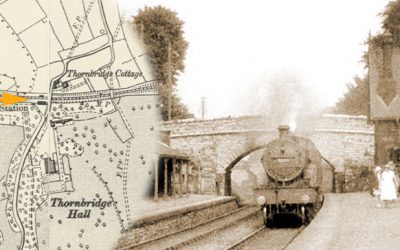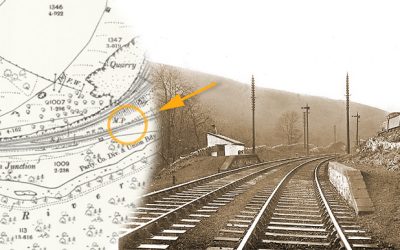
Above: Miller’s Dale Station, pictured in 1905, was the largest and most important station on Midland Railway’s line.
The railway years
![]()
It’s difficult to imagine when walking or cycling the Monsal Trail that it was once a busy railway line linking the important Victorian cities of Manchester and Derby, and south to London. There were five railway stations along this 8.5 mile section of the route, plus a small ‘halt’ for railway workers. Click below for information and photos on them all, as well as a brief history of the line.
Brief history
Today’s quiet and peaceful Monsal Trail once rang to the noisy sounds of steam engines running on one of the most important railway lines in the country, linking Manchester with London.
Bakewell Station
Bakewell Station played a vital part in the town’s prosperity and expansion, but it very nearly didn’t happen when the Duke of Rutland refused permission for it to pass close to Haddon Hall.
Hassop Station
Hassop Station was built to the highest standards and included a first class waiting room designed to entice the Duke of Devonshire. But it was all to no effect as he preferred Rowsley!
Great Longstone Station
Great Longstone Station was the third stop on Midland Railway’s extension from Bakewell to London and Buxton. It opened in 1863 and closed 99 years later in 1962; a victim of the Beeching cuts.
Monsal Dale Station
A stretch of platform is all that’s left of Monsal Dale Railway Station which lay on the Buxton side of Headstone Viaduct. It was the last of five stations to be built on this section of the line.
Miller’s Dale Station
Set in typically scenic Peak District countryside, Miller’s Dale Station became an unlikely but important intercity hub in the heyday of steam travel on the route between London and Manchester.
Blackwell Mill Halt
Blackwell Mill Halt was built for railway workers living in the cottages close to the start of today’s Monsal Trail. Recent plans for a light railway could mean it emerges once again from the undergrowth.







